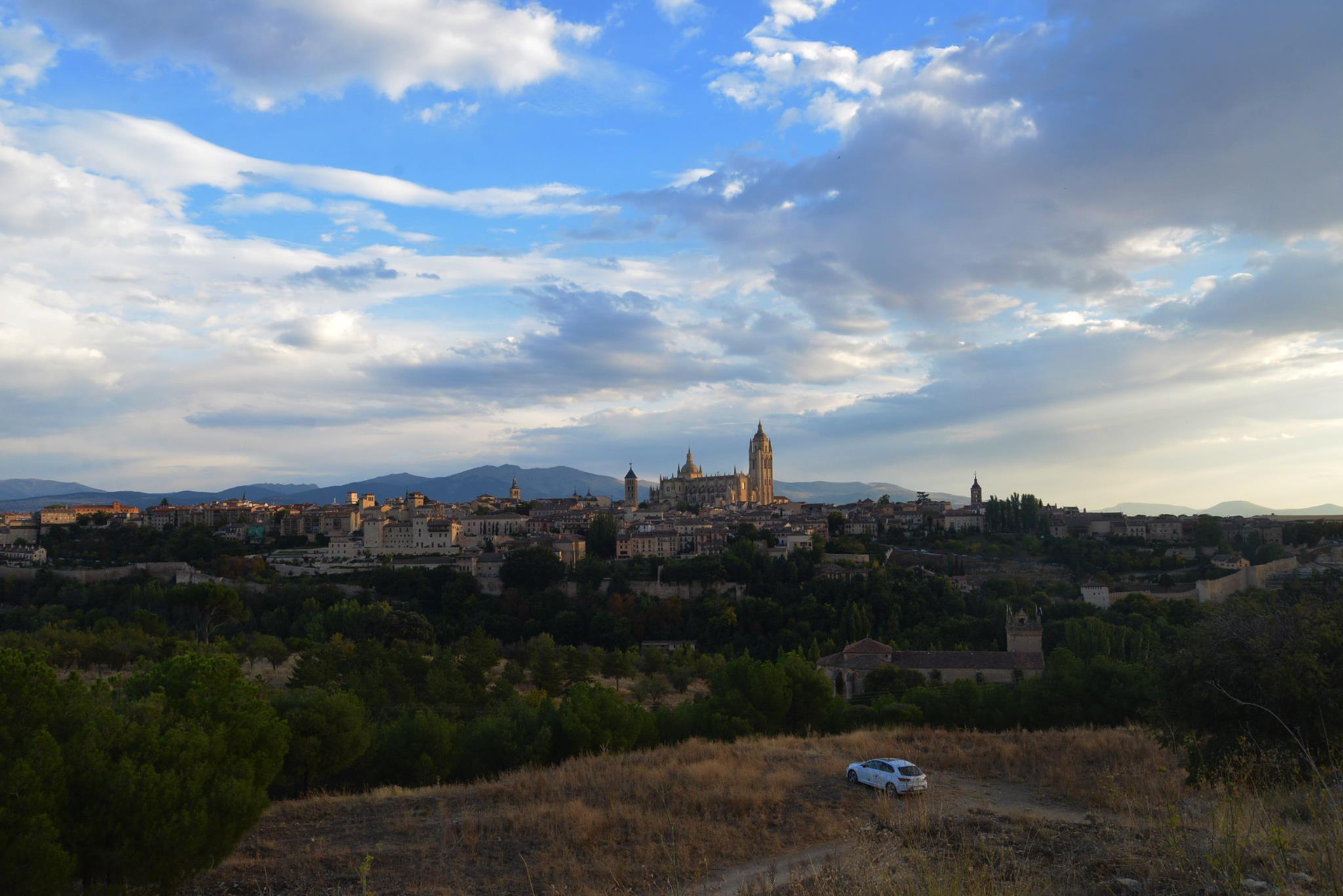The little town of Segovia is Spain’s hidden gem, a scenic haven situated northwest of the country’s capital, Madrid. Home to less than 60,000 people, it may seem trivial, but its charm is conspicuous and unavoidable. Beyond the city’s picture-perfect landscape lies rich history, earning Segovia and its Aqueduct a spot on UNESCO’s World Heritage Sites list. It speaks its own architectural language, somehow fusing miles of green grass with elegant structures. Segovia stands proudly on the top of Spain’s hills, boasting the magical Alcazar, the castle that inspired Walt Disney’s. Even though Segovia seems to be an unnecessary day trip, the trek is definitely worth your while.
History

There’s no denying Segovia’s impeccable preservation of Roman, Spanish, Jewish and Arab influence. Its centuries of cross-cultural settlement have provided the city with a stunning architectural legacy. Notable landmarks of Segovia are the Romanesque churches, medieval walls, cobblestone pathways, a formerly inhabited royal palace and a Gothic Cathedral. The most outstanding landmark of all is the ancient Roman Aqueduct, which has over 160 arches in the middle of the city at Plaza Azoguejo.
In short, Segovia was conquered by the Romans between 98 and 94 B.C., years before the Moors took the city. After years of abandonment from Islamic occupation, the Spanish reclaimed the land and thrived thanks to Alfonso VI. The city had its own renaissance and became a trading hub due to its prime location. Monuments like the Alcazar were re-constructed by the Spanish, however, one can see that the structure and design still heavily reflect Islamic influence (which is also prevalent in details throughout Segovia.) Fun fact: the castle is where Queen Isabella and King Ferdinand first met, and where Isabella was crowned in 1474.
The Alcazar has been converted into a museum and is a great place to learn in-depth history about Segovia. If you’ve got the legs and breath for it, we recommend you walk the Alcazar tower’s 152 stairs to the top after taking the museum tour. You’ll feel sporty, smart and sort of like Sleeping Beauty afterwards. It gives a breathtaking, panoramic view of the quaint town, so make sure to snap a few photos! Its grandiosity is not only a visual wonder, but also an architectural one.
Culture
Besides some side streets and hidden nooks, Segovia can be walked on foot by following its own version of a yellow brick road. A path leads from the Aqueduct, through Plaza Mayor (the city’s center), all the way to the Alcazar, passing small shops and the famous Gothic-style Cathedral on the way. As you tread along, you’ll take quick notice of all the
dogs playing around the city. Segovia (and the rest of Spain, really) is very pet-friendly, so don’t surprised if you find a dog(s) constantly barking at your feet.
The locals take their naps very seriously, with the mandatory ‘siesta’ enforced weekdays from roughly 2-5 pm. All stores, pharmacies, and restaurants close for those hours, so make sure you get your lunch and shopping in before then. Most places re-open after 5 and stay open until 8 or 10 pm.
The city is usually pleasantly quiet, especially at night. But on weekends, you can find university students from both the local and international schools flooding the streets. After a dinner of cochinillo and vino tinto, stroll the streets that branch off of Plaza Mayor for some late-night fun at one of the several local bars. The drinks are almost always strong, and decently priced!
Throughout the year, Segovia is home to a few festivals that offer lots of fun and education. The International Festival held in July is a perfect excuse to participate, or admire, the beauty of the historic flamenco style of dance. The Hay Festival occurs throughout September, and educates attendees over matters of politics, history and even theater.

Nature
Segovia is located in the Castile and Leon region of Central Spain, and surrounded by the Guadarrama mountain range stretching for miles. There are an abundance of outdoor activities in the historic town, making it easy to get a breath of fresh air. A river runs just below the city’s ancient walls, and alongside it are great paths for a nice jog through a forested park.
If you have access to a car, make sure you drive up to the Navacerrada mountains.The view is breathtaking, but make sure you pack a jacket, even in summertime– it gets cold after sundown. We suggest packing a picnic with friends (featuring only Spain’s finest cheese and wine, of course) to get the full experience. Other nearby cities include La Granja and Sepulveda with monuments and terrains that may even surpass Segovia’s (okay, maybe not, but they’re pretty close!)
The People
For the most part, the locals only speak Spanish, with bits of broken English dispersed into conversation. However, everyone is friendly and eager to help tourists understand the culture of their historic town. Segovia usually has tourists year round, so if you find yourself lost or in search of a landmark, have no fear; a fellow traveller is nearby!
IE University brings internationals to the city, helping to diversify Segovia’s population. If you’re looking for a fun (and unexpected) night out, you can almost be sure to find students dancing the night away at Canavan’s Theatre on Tuesdays and Thursdays.
Food
Options are limited in Segovia, but there are must-try spots that sport both traditional Spanish and international cuisine. You have to grab a carafe of Spain’s finest Sangria, a sweet, summery alcoholic beverage priced at around 13 euros (it’s a steal!)

If you’re limited on time, make grabbing tapas at El Sitio your top priority. This bar pairs delicious, cheap wine with (free!) delectable tapas for you or a group of friends to share. Staples include garlic potatoes, mini squid, and ham croquettes.
For a flavor-filled burger, walk to San Luis, which conveniently sits across the street from El Sitio. Spain is known for its cochinillo and wine, so for the traditional experience, grab a bite at Duque, where men are dressed head-to-toe in bowties, and stop by Jose Maria for 3 euro rioja. Tuma serves authentic Mediterranean food, with the Lebanese owners cooking from old, passed-down recipes. It’s a great spot (and the only spot, really) for shisha, Moroccan tea, and some bomb ass shawarma. Concepción in Plaza Mayor has great breakfast, so wake up early and dive into a Spanish omelet. Leave room for dessert, as Pastelería Limón y Menta’s has treats you’ll want to stack up on. The city is known for their delectable Ponché Segoviano, which is a treat like no other and special to the medieval town. The cake consists of three layers, with an egg yolk cream between the cake and a thick layer of sugary marzipan covering it whole. The cake is served chilled, and melts in your mouth. You don’t want to skip out on dessert– trust us.
TIPS
- Get cash out! Most places in Segovia, let alone Spain, do not accept card. Save yourself the hassle beforehand.
- If you’re coming from Madrid, you have two options: either take hour bus ride from the Moncloa station or, take the train from the Chamartin station for the quicker route. From Segovia’s bus station, you can easily walk to the center. If you’re arriving by train, you’ll have to take a taxi into the main part of the city or grab the bus No.11 from Segovia’s Guiomar Renfe Train station.
- Brush up on conversational Spanish. Segovia works hard to preserve its history and culture, so don’t expect many English speakers.





